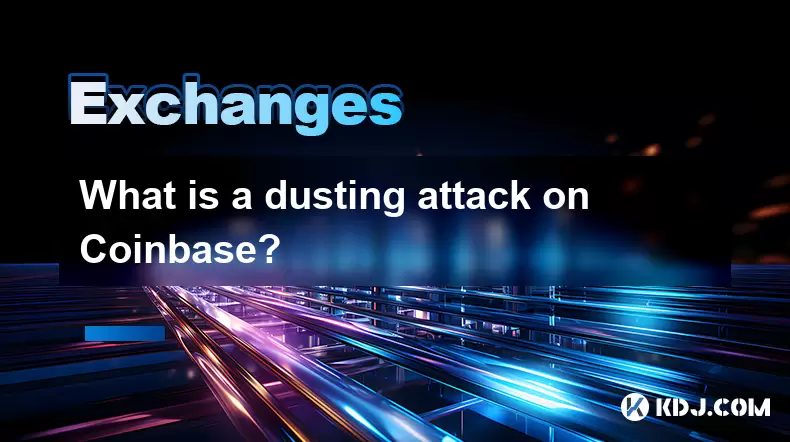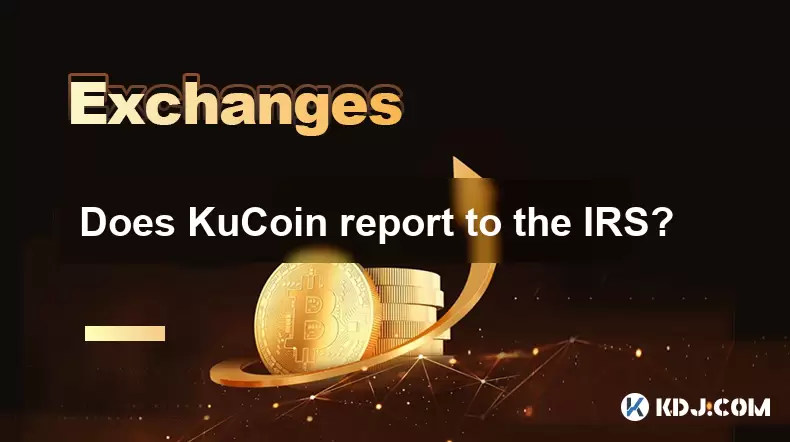-
 Bitcoin
Bitcoin $118000
-1.29% -
 Ethereum
Ethereum $3758
-3.52% -
 XRP
XRP $3.113
-5.04% -
 Tether USDt
Tether USDt $0.9998
-0.05% -
 BNB
BNB $818.5
-3.23% -
 Solana
Solana $181.9
-5.10% -
 USDC
USDC $0.9997
-0.04% -
 Dogecoin
Dogecoin $0.2239
-8.33% -
 TRON
TRON $0.3233
0.95% -
 Cardano
Cardano $0.7842
-6.81% -
 Hyperliquid
Hyperliquid $43.35
-2.12% -
 Sui
Sui $3.894
-9.97% -
 Stellar
Stellar $0.4176
-6.99% -
 Chainlink
Chainlink $17.97
-6.68% -
 Bitcoin Cash
Bitcoin Cash $576.7
-2.30% -
 Hedera
Hedera $0.2671
-7.23% -
 Avalanche
Avalanche $24.64
-6.12% -
 UNUS SED LEO
UNUS SED LEO $8.972
0.08% -
 Litecoin
Litecoin $108.1
-6.55% -
 Toncoin
Toncoin $3.198
-5.94% -
 Shiba Inu
Shiba Inu $0.00001325
-6.80% -
 Ethena USDe
Ethena USDe $1.001
-0.04% -
 Uniswap
Uniswap $10.27
-7.02% -
 Polkadot
Polkadot $3.935
-7.49% -
 Monero
Monero $317.7
-2.24% -
 Dai
Dai $0.9999
0.00% -
 Bitget Token
Bitget Token $4.550
-3.85% -
 Pepe
Pepe $0.00001179
-8.68% -
 Cronos
Cronos $0.1418
-2.34% -
 Aave
Aave $286.2
-6.49%
What is a dusting attack on Coinbase?
A dusting attack on Coinbase involves sending tiny crypto amounts to track user activity and compromise privacy.
Jul 29, 2025 at 04:29 am

Understanding the Concept of a Dusting Attack
A dusting attack refers to a malicious tactic used in the cryptocurrency space where attackers send minuscule amounts of cryptocurrency—often referred to as "dust"—to a large number of wallet addresses. The primary goal of this attack is not financial gain, but rather to identify and track wallet owners. In the context of Coinbase, a major cryptocurrency exchange, such attacks can have implications for user privacy and security.
The term "dust" typically refers to insignificant amounts of cryptocurrency that are too small to be transacted economically. For example, 0.00000001 BTC is considered dust in the Bitcoin network. These tiny amounts are often below the minimum transaction fees required to send them elsewhere.
How Dusting Attacks Are Executed on Coinbase
When a dusting attack occurs on Coinbase, it usually involves sending microscopic amounts of crypto to thousands of wallet addresses associated with the platform. The attacker then monitors how these funds are used. If a recipient unknowingly spends the dust along with other funds in a transaction, it can expose the transaction graph, allowing the attacker to map out wallet linkages.
Coinbase users might not even be aware that they've received dust, as these amounts are often invisible to the average user or appear as negligible balances in their wallets. However, if the wallet is connected to a service or used in a transaction, the attacker may trace activity back to the individual.
This type of attack leverages the transparent nature of blockchain ledgers, where every transaction is publicly visible. While this transparency is a key feature of blockchain technology, it also opens the door to privacy exploitation techniques like dusting.
Why Coinbase Users Are Targeted
Coinbase is one of the most popular cryptocurrency platforms globally, hosting millions of active wallets. This makes it an attractive target for dusting attacks. Attackers may aim to unmask users' identities, track transaction histories, or even prepare for future phishing or scamming attempts.
Another reason Coinbase users are targeted is due to the exchange's integration with fiat systems. Many Coinbase users link their bank accounts or credit cards, which makes de-anonymizing them more valuable from an attacker's perspective. The dusting attack serves as a first step in a larger chain of surveillance or exploitation.
Moreover, Coinbase's custodial nature—where the exchange manages private keys for users—can reduce the user's control over transaction inputs, making it easier for attackers to trace behavior. This is in contrast to non-custodial wallets where users have more discretion over transaction management.
Technical Aspects of Dusting on the Blockchain
Dusting attacks rely on blockchain analysis techniques. When a dust transaction is sent to a wallet, it becomes part of the public transaction history. If the wallet owner spends this dust along with other coins in a transaction, it can create a link between previously unrelated addresses.
For example, if a Coinbase wallet receives dust and later combines it with other funds to make a payment, the blockchain explorer can show a connection between all the inputs used. This allows attackers to build a map of wallet relationships, which may lead to identifying the wallet owner.
To execute this, attackers often use automated scripts and tools to:
- Identify active wallet addresses
- Send micro-transactions across multiple addresses
- Monitor subsequent transactions for input combinations
This process is largely automated and scalable, making it possible to attack thousands of wallets simultaneously.
Protecting Yourself from Dusting Attacks on Coinbase
Coinbase has implemented certain protections against dusting attacks, such as flagging suspicious transactions and blocking certain low-value transfers. However, users should also take proactive measures to protect their privacy.
One effective method is to avoid spending dust. If you notice tiny, unexplained balances in your Coinbase wallet, do not use them in transactions. These balances can be safely ignored or left untouched to prevent linkage.
Additionally, consider using non-custodial wallets for more sensitive transactions. These wallets give you full control over your private keys and transaction inputs, allowing you to avoid combining dust with real funds.
You can also:
- Regularly check your transaction history for unfamiliar or small-value transactions
- Avoid reusing the same wallet address for multiple transactions
- Use privacy-enhancing tools or services that obscure transaction trails
Recognizing Dusting Attack Indicators
Identifying whether you've been targeted by a dusting attack requires monitoring your wallet activity. On Coinbase, you can check your transaction history through the wallet details section. Look for inbound transactions with extremely low values, especially those that appear suddenly and without explanation.
Some signs of a dusting attack include:
- Receiving multiple tiny transactions from different senders
- Seeing inbound transactions with amounts that cannot be withdrawn or spent
- Noticing transactions that originated from unknown or suspicious addresses
If you observe these patterns, it's important to avoid interacting with those funds and refrain from sending any transactions that include them as inputs.
Frequently Asked Questions (FAQs)
Q: Can Coinbase detect and prevent dusting attacks automatically?
A: Yes, Coinbase employs advanced blockchain monitoring tools that can detect unusual transaction patterns, including dusting. However, no system is 100% foolproof, so users should remain vigilant and avoid interacting with suspicious transactions.
Q: Is dusting illegal?
A: While dusting itself is not explicitly illegal, it is considered an unethical and potentially malicious practice. It can be used for surveillance, identity tracking, and preparing for more serious attacks.
Q: Can dusting attacks affect other exchanges or wallets?
A: Yes, dusting attacks are not limited to Coinbase. Any platform or wallet that interacts with public blockchains can be targeted. Non-custodial wallets and decentralized exchanges are also susceptible, though they may offer more control over transaction inputs.
Q: What should I do if I receive dust on Coinbase?
A: If you receive dust, the best course of action is to leave it untouched. Do not spend it or combine it with other funds. You can also report the transaction to Coinbase support, although recovery or removal of dust is typically not possible.
Disclaimer:info@kdj.com
The information provided is not trading advice. kdj.com does not assume any responsibility for any investments made based on the information provided in this article. Cryptocurrencies are highly volatile and it is highly recommended that you invest with caution after thorough research!
If you believe that the content used on this website infringes your copyright, please contact us immediately (info@kdj.com) and we will delete it promptly.
- XRP & Shiba Inu: The Race for Faster Growth – Which Will Win?
- 2025-07-29 16:30:12
- Bitcoin Swift (BTC3): AI-Powered Blockchain Presale Heats Up!
- 2025-07-29 17:10:12
- EDU Token, Binance, and Liquidity Concerns: What's the Deal?
- 2025-07-29 16:50:12
- Bitcoin Price Bulls Eye $120K: Will the Rally Continue?
- 2025-07-29 17:10:12
- Upbit, INJ, and the Injective Upgrade: What's the Hype?
- 2025-07-29 16:50:12
- ARK Invest, BitMine, and Coinbase: A Wild Ride in the Crypto World
- 2025-07-29 16:30:12
Related knowledge

KuCoin mobile app vs desktop
Jul 19,2025 at 08:35am
Overview of KuCoin Mobile App and Desktop PlatformThe KuCoin ecosystem offers both a mobile app and a desktop platform, each designed to cater to diff...

Is KuCoin a decentralized exchange?
Jul 18,2025 at 03:15pm
Understanding Decentralized Exchanges (DEXs)To determine whether KuCoin is a decentralized exchange, it's essential to first understand what defines a...

How to trade options on KuCoin?
Jul 19,2025 at 03:42am
Understanding Options Trading on KuCoinOptions trading on KuCoin allows users to speculate on the future price movements of cryptocurrencies without o...

What are KuCoin trading password rules?
Jul 20,2025 at 07:56am
Understanding the Purpose of a Trading Password on KuCoinOn KuCoin, a trading password serves as an additional layer of security beyond the standard l...

Does KuCoin report to the IRS?
Jul 27,2025 at 05:01am
Understanding the Reporting Obligations of KuCoinCryptocurrency exchanges are increasingly under scrutiny from global tax authorities, and KuCoin is n...

Who is the CEO of KuCoin?
Jul 20,2025 at 09:35am
Background of KuCoinKuCoin is one of the largest cryptocurrency exchanges globally, known for its diverse range of trading pairs and user-friendly int...

KuCoin mobile app vs desktop
Jul 19,2025 at 08:35am
Overview of KuCoin Mobile App and Desktop PlatformThe KuCoin ecosystem offers both a mobile app and a desktop platform, each designed to cater to diff...

Is KuCoin a decentralized exchange?
Jul 18,2025 at 03:15pm
Understanding Decentralized Exchanges (DEXs)To determine whether KuCoin is a decentralized exchange, it's essential to first understand what defines a...

How to trade options on KuCoin?
Jul 19,2025 at 03:42am
Understanding Options Trading on KuCoinOptions trading on KuCoin allows users to speculate on the future price movements of cryptocurrencies without o...

What are KuCoin trading password rules?
Jul 20,2025 at 07:56am
Understanding the Purpose of a Trading Password on KuCoinOn KuCoin, a trading password serves as an additional layer of security beyond the standard l...

Does KuCoin report to the IRS?
Jul 27,2025 at 05:01am
Understanding the Reporting Obligations of KuCoinCryptocurrency exchanges are increasingly under scrutiny from global tax authorities, and KuCoin is n...

Who is the CEO of KuCoin?
Jul 20,2025 at 09:35am
Background of KuCoinKuCoin is one of the largest cryptocurrency exchanges globally, known for its diverse range of trading pairs and user-friendly int...
See all articles

























































































